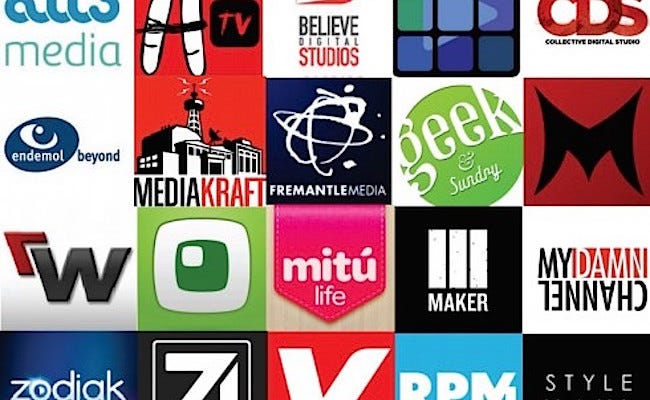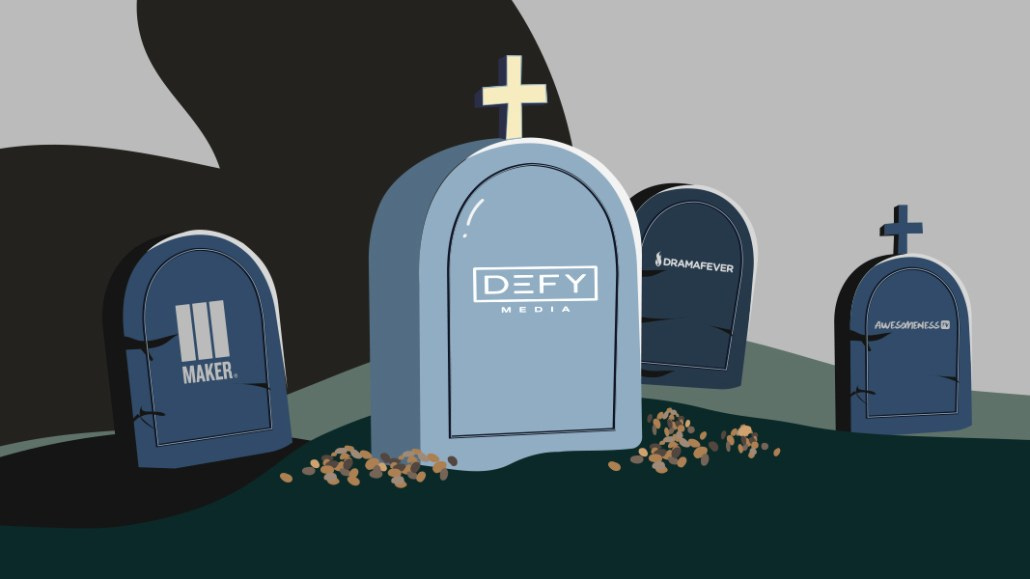MCNs, multi-channel-networks, were all the hype 5-9 years ago when big brands started aggregating groups of YouTube channels, providing strategy and partnerships in return for a cut of the creator’s AdSense revenue.
In theory it was a spectacular idea—big brands with money and resources would come in and help smaller YouTubers with monetization, cross-promotion, production tools and data analysis (ahhh, so we’re not actually first-to-market) in return for a share of the YouTuber’s ad revenue.
MCNs promised scale, an instant green light for any hustling YouTuber. This is why many YouTubers, large and small, decided to sign with agencies like Defy Media and AwesomenessTV in exchange for a cut of their Adsense revenue. At one point, Defy Media had accumulated over 50 YouTube creators, many of whom contained millions of subscribers, and had raised a $70 million Series B. Yup $70,000,000 to help teenagers make prank videos.
Two years later, however, the once visionary creator economy startup Defy Media was issuing multiple rounds of layoffs and facing lawsuits from investors and creators alike. In 2019, Ally Bank seized all of Defy’s assets, an unsurprising ending given the state of MCNs at the time.
Why this happened, and most notably how this happened, is a combination of neglect, mismanagement, and poor relationships. MCNs are having ripple effects in the YouTube metaverse to this day, and understanding their rise and fall is critical as we attempt to build a more inclusive and opportune economy for creators.
On their best days, MCNs simply resembled a business model ahead of their time, with ideals preceding execution. On their worst days, however, MCNs embodied the self-proclaimed ‘visionary’ tech companies that crumbled in the emergence of the 21st century. Unfortunately for MCNs, these last 5-9 years have been flooded with such ‘worst’ days.
In some sense, MCNs were doomed from the start. Yes, revenue-sharing is scalable in theory, but revenue-sharing across thousands of creators at varying sizes is simply unrealistic. It’s like training me and Roger Federer on the same tennis court.
YouTube success, like any other industry—sports, business, or entertainment—is an exponential game. It’s the world’s top creators, those with at least 100,000 subscribers, that generate worthwhile revenue. As such, popular MCNs were partnering with hundreds or even thousands of creators at a time even though their revenue potential was concentrated at the top end of their clientele. Yea, college econ is boring but the Pareto 80/20 principle is legit.
Anyway, what emerged from this structure were conflicting incentives and priorities. MCNs’ lack of infrastructure made supporting and partnering with each channel nearly impossible. Unsurprisingly, MCNs created a reputation of solely promoting their most popular channels. Many creators felt neglected and even deceived from their original agreements. This video by Ryland Adams (with 8 million views!) is a fantastic explanation of how Defy Media (&MCNs in general) completely f**ked up.
Alas, screwing over your clients is not enough to be erased in the business world (@Lehman Brothers). In the end, it was their own platform that dragged them through the mud: YouTube. Yup, YouTube itself was the one that cracked down on MCNs through two crucial policies in 2018.
The first signaled the beginning of the end: in 2018 YouTube changed its community guidelines by broadening what it meant for videos to pose “a risk of violating YouTube’s terms of service”. This essentially meant that supporting channels (and making sure they were monetizable) would require intense content monitoring for each individual channel, an unachievable task for consultancies with thousands of clients. MCNs subsequently dropped thousands of creators from their networks, often failing to explain to those creators why they were dropped.
The second policy was the final straw: YouTube removed a creator tier known as “managed partners” which let networks like MCNs run ads of videos instead of requiring YouTubers to go through YouTube’s Partner Program. I’m sure you can hypothesize where this is heading. As a result, creators under the MCN umbrella had to reapply to receive AdSense revenue through YouTube’s Partner Program. YouTube made it so that there was literally no advantage to work with an MCN. Period. End of story.
Literally, that’s the end of the story. MCNs slowly dissolved, were bought out, or filed for bankruptcy.
This is perhaps one of the greatest power moves that the tech world has ever seen. With the snap of their fingers, YouTube eliminated an emerging industry that had raised 100s of millions of dollars.
What can we learn from this? Don’t piss off tech giants, for starters. Yet, more importantly, the creator economy is lacking a critical feature required in every established ‘economy’ from fashion to automobiles: trust.
MCNs intensified creators’ mistrust towards corporations. Whether or not this trust can be rebuilt … well, only time will tell.
🎥 Video of the Week — 7 Side Hustles You Can Start in 2022 by Ali Abdaal
🍿 Youtuber: Ali Abdaal
👀 Views: 274k
👍 Likes: 13k
💬 Comments: 1.3k
🔔 Subscribers: 2.73M
🎬 Action Steps:
Follow us https://twitter.com/amagrowth
Think this would help a YouTuber or creator you know? Forward it to them!
Have a great rest of the week creators!
Sent with 💜,





